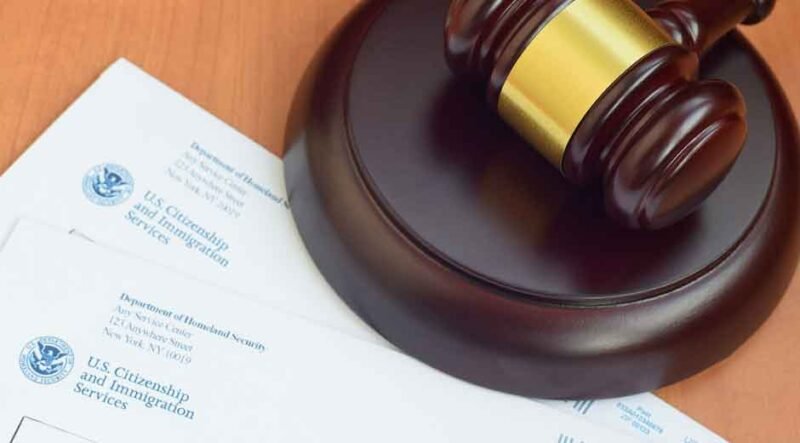
Individuals looking for freedom, stability, or a fresh start frequently seek opportunities in the United States. However, crossing boundaries and creating a life under legal protection calls for more than just arrival. Legal status provides access to employment, safety, and belonging, but the road to getting it calls for clarity, endurance, and patience. Understanding possible avenues helps you to proceed forward with control rather than uncertainty in a system defined by layers of credentials and legal checkpoints.
Family-Based Immigration Routes Offer Personal and Legal Anchoring
Family ties remain a central pillar of US immigration law, providing structured pathways to lawful permanent residence. You can sponsor yourself for an immigrant visa if you have close relations who are lawful permanent residents or U.S citizens. These relationships include parents, children, spouses, and occasionally siblings. Visa availability is usually more straightforward and less complicated for family relatives of U.S. citizens, such as spouses, and young children. Visa caps result in longer wait times for distant family relationships. Though these relationships have emotional power, each case requires specific documentation—birth certificates, marriage records, affidavits, and proof of financial sponsorship—to meet immigration criteria and avoid administrative rejection.
Employment-Based Immigration Follows a Skill and Labor Market Focus
Employment-based pathways rely on your capacity to provide skills the American workforce appreciates. This group includes those with exceptional talent, advanced degree holders, experienced workers, and those covering labor shortages. In many cases, companies start the procedure by getting labor certificates and formally presenting job offers that meet your need for a visa. You proceed through the consular processing or status-adjusting procedures once employment sponsorship is verified. Legal accuracy and employment verification are absolutely vital on this path since they call for meticulous alignment between your qualifications and federal labor rules. Maintaining legal status by employment also binds your stay to your professional performance, which further emphasizes regular compliance and documentation.
Asylum and Refugee Protections Serve as a Humanitarian Lifeline
The U.S. grants legal protection through asylum or refugee status for persons fleeing persecution based on race, religion, nationality, political opinion, or social group membership. While asylum seekers file claims after landing in the United States, refugees usually seek resettlement from elsewhere. These humanitarian routes entail presenting credible fear of return and supporting that claim with testimony, documents, and, in some cases, eyewitness accounts. Asylum applicants often have court hearings or interviews where their story has to match your application exactly. Approval provides you with legal protection, work authorization access, and, eventually, the chance to apply for permanent residency. These protections are affirmations of human dignity in times of danger as much as legal measures.
Legal Relief for Detained Individuals Includes Options for Temporary Release
Legal status doesn’t usually start with freedom for people facing detention because of immigration infractions or pending removal processes. Under these circumstances, you or your representative might ask for temporary release based on immigration bonds. Immigration judges or ICE officials set these bonds, which serve as a guarantee that you will show up for court hearings and follow case criteria. You are released once a bond is paid while your case works through the court system. Maintaining eligibility for future relief depends on knowing the requirements associated with these bonds—such as travel limitations or frequent check-ins. This judicial system allows individuals to engage in their defense outside of incarceration, therefore supporting due process.
Adjustment of Status and Naturalization Complete the Legal Transition
For many, achieving legal entry or temporary status marks only the beginning. Status adjustment allows you to move from a temporary visa holder to a lawful permanent resident without ever leaving the country. Those who satisfy eligibility by family, work, asylum, or another category should follow this procedure. Once permanent residency is obtained, you live and work in the United States indefinitely and preserve most of the legal rights granted to citizens. Legal permanent residents can petition for naturalization over time, therefore conferring full citizenship advantages. The procedure consists of completing a civics and English test, turning in biometric information, and attending an interview. The final transformation closes the loop between arrival and integration and provides legal, social, and civic standing, enabling you to participate in American life fully.
Conclusion
Legal status in the United States depends on knowledge of the system and selecting a road fit for your circumstances; it doesn’t rely on luck. Every step ahead starts with legal understanding and unambiguous action, whether your path forward is toward family reunion, professional skills, refuge, or detention challenges. These routes exist not only as policy but also as genuine opportunities for security, contribution, and inclusion. Clarity becomes your most valuable asset on this journey, assisting you in navigating complexity and achieving peace of mind.

